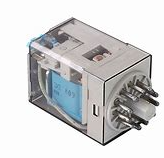In the realm of modern automatic control systems, the role of relays is undeniably significant. Despite the trend towards electronic switches like field effect transistors, transistors, and optocouplers in modern automation technology, relays maintain their distinct application value and importance. This article aims to delve into the diverse types of relays and their unique characteristics within automatic control systems.

1. Classification of Relay Working Methods
A relay's working mode is a pivotal classification criterion. Predominant among these is the electromagnetic relay, functioning through an attraction force between its electromagnetic core and the armature, generated by current input. Then, there's the solid-state relay; it operates through electronic components, devoid of mechanical moving parts, ensuring input-output isolation. Other types include temperature relays, triggered by specific external temperatures; reed relays, using temperature as a trigger; time relays, relying on time delay for output control; high-frequency relays, for high-frequency radio frequency line switching; and polarizing relays, where operation direction hinges on the control coil's current direction. The list extends to optical, acoustic, and thermal relays, among others.
2. Size Classification of Relays
Relay size is another crucial classification parameter. Micro relays measure no more than 10 mm on their longest side. Ultra-small micro relays range between 10 and 25 mm, and small micro relays span 25 to 50 mm. It's essential to note that for sealed or enclosed relays, the size pertains to the relay body's maximum dimension in three perpendicular directions, exclusive of mounting parts and terminals.
3. Load Classification of Relays
The relay's load capacity is a key classification factor. Relays are categorized based on their resistive load capacity under specific voltage conditions into micropower, weak power, medium power, and high power relays. This division is grounded in the varying current levels relays can endure, with a contact open circuit voltage of 28V DC.
4. Classification of Relay Protective Features
Relays are also classified by their protective characteristics: sealed, enclosed, and open. Sealed relays internalize components like contacts and coils, using welding or other methods to diminish leakage rates. Enclosed relays protect these components with a cover, whereas open relays lack any protective covering.
Summary
In the electronics manufacturing sector, electromagnetic and reed relays stand out as the most prevalent. This discussion enriches the reader's understanding of the various types and characteristics of relays. The forthcoming article will delve deeper into relay working principles and main parameters, enhancing comprehension of these critical components in automatic control systems.
